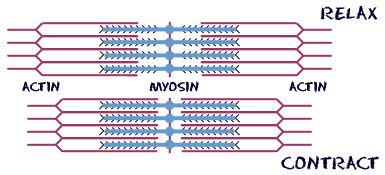Vitamins and minerals are needed for internal bodily functions such as the assistance of digestion, neurotransmission, and the release of fuel within the muscles for movement. As these are so important, The recommended daily amount to consume set by the government is 5 portions of different fruit and vegetables a day.Vitamins are organic and are consumed by eating fresh fruit and veg, whilst minerals come from the ground which vegetation grows upon, therefore plants, and animals that eat from the ground, such as cows, contain the minerals we need, therefore dairy produce can be nutritious with minerals. these minerals are
Fresh Dairy produce however, can contain high amounts of fats which for an athlete such as a gymnast, can have a negative effect on their performance if over consumed as it would be stored around the body, decreasing flexibility. But would benefit the endurance athlete 1-3 days prior to an endurance event, by giving them more energy stores. only milligrams and micrograms are needed. Minerals cannot be created or broken down by the body as they are 'inorganic' and vitamins can only be consumed, and cannot be made by the body.
Water and Fat soluble vitamins can only be absorbed when either is present. Vitamins A E D and K can only be absorbed via fat. These help growth and body maintenance; essential for both athletes. Water soluble vitamins B6, B12, C, Pantothenic Acid Biotin, Niacin, Riboflavin, Thiamine and Folate, assist with the release and use of energy within the body, replenishment, and neurotransmissions.
This is vitally important for a Gymnast, as their moves and skills, need to be self corrected at an expert level. If the athlete had severe deficiencies of thiamine, it could result in the athlete not performing and completing actions as smoothly as desired, due to poor efficiency of energy use and poor neurotransmission. This would also have a negative effect on the endurance athlete as it is essential for their bodies to be as efficient with the use of carbohydrates as physically possible, to put them in good stead for the race.
Long term deficiencies of Vitamins and minerals can have a negative effect on the body in later life, to the point of diseases such as Alzheimer's.
click here to read an article by McCaddon and Kelly, discussing the relation between Alzheimer's and vitamin b12 deficiencies.
Fresh Dairy produce however, can contain high amounts of fats which for an athlete such as a gymnast, can have a negative effect on their performance if over consumed as it would be stored around the body, decreasing flexibility. But would benefit the endurance athlete 1-3 days prior to an endurance event, by giving them more energy stores. only milligrams and micrograms are needed. Minerals cannot be created or broken down by the body as they are 'inorganic' and vitamins can only be consumed, and cannot be made by the body.
Water and Fat soluble vitamins can only be absorbed when either is present. Vitamins A E D and K can only be absorbed via fat. These help growth and body maintenance; essential for both athletes. Water soluble vitamins B6, B12, C, Pantothenic Acid Biotin, Niacin, Riboflavin, Thiamine and Folate, assist with the release and use of energy within the body, replenishment, and neurotransmissions.
This is vitally important for a Gymnast, as their moves and skills, need to be self corrected at an expert level. If the athlete had severe deficiencies of thiamine, it could result in the athlete not performing and completing actions as smoothly as desired, due to poor efficiency of energy use and poor neurotransmission. This would also have a negative effect on the endurance athlete as it is essential for their bodies to be as efficient with the use of carbohydrates as physically possible, to put them in good stead for the race.
Long term deficiencies of Vitamins and minerals can have a negative effect on the body in later life, to the point of diseases such as Alzheimer's.
click here to read an article by McCaddon and Kelly, discussing the relation between Alzheimer's and vitamin b12 deficiencies.





